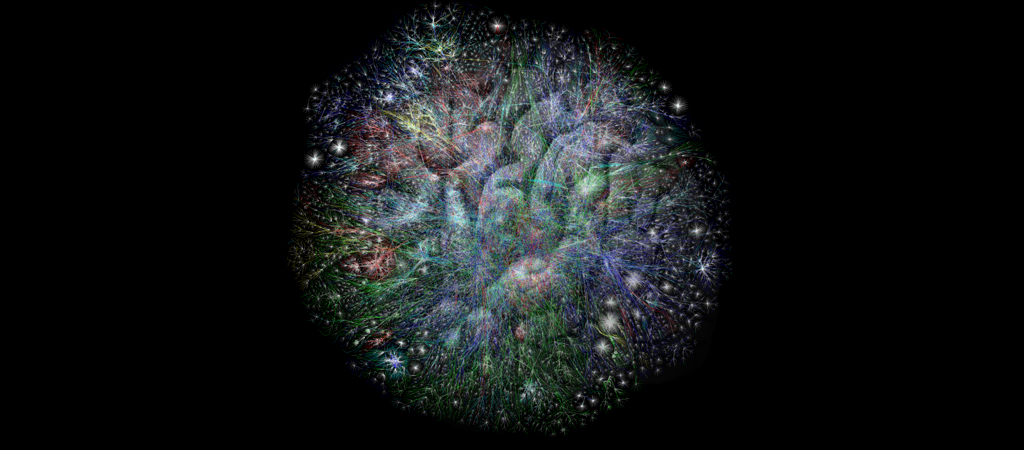Teilhard’s description of the noosphere covers various manifestations of human cultural and technological evolution. In explaining his vision as a “Plausible Biological Interpretation of Human History”, these are enumerated in three categories—the apparatus of heredity, the mechanical apparatus, and the cerebral apparatus.
However, it’s the third feature of its anatomy—the cerebral apparatus—that most compellingly embodies Teilhard’s definition of the noosphere as “an envelope of thinking substance”. That is commonly interpreted as a global brain with collective consciousness. But how would that work?
Teilhard himself acknowledged the primary challenge in making this leap:
“On the one hand we have a single brain, formed of nervous nuclei, and on the other a Brain of brains. It is true that between these two organic complexes a major difference exists. Whereas in the case of the individual brain thought emerges from a system of nonthinking nervous fibers, in the case of the collective brain each separate unit is in itself an autonomous center of reflection. If the comparison is to be a just one we must, at every point of resemblance, take this difference into account.”
One of the leaders in the field of research into the global brain and collective consciousness is Francis Heylighen. He is the director of the Center Leo Apostel (CLEA) for transdisciplinary studies at the Vrije Universiteit Brussel (Free University of Brussels).
CLEA is part of an international effort initiated, funded, and directed by Human Energy to provide a scientific foundation for a theory of the noosphere. Their research builds on the related concepts of the Global Brain and the distributed intelligence of the Internet. In addition, CLEA is working with HEP to develop an integrated, meaningful, science-based worldview called the Third Story.
Francis’s work delves into to many aspects of these subjects, which he describes thusly:
“The main focus of my research is the origin and evolution of complex, and in particular intelligent, organization. How do systems emerge,
self-organize, adapt and achieve some form of cognition? I approach these problems starting from an ontology of actions or processes: the building blocks of reality are not material particles or “things”, but interactions. Systems are then merely self-maintaining networks of processes, as elegantly modelled by the
formalism of COT. I have worked in particular on the development of
collective intelligence or distributed cognition, and its application to the emerging
“global brain”. I have also been looking at how individual agents tackle challenges via action, exploration, and learning, and how their interactions become coordinated via connectionist networks and
stigmergy.
“I use the underlying
action ontology as a foundation for the integration of ideas from different disciplines into an evolutionary-cybernetic
“world view” , which is to replace the static and reductionist Newtonian worldview. This broad
evolutionary view, together with its practical applications on the Internet, has helped me to develop a broad, but concrete vision on the
future of the information society. The main idea is that humanity is undergoing a metasystem transition towards a higher level of organization and distributed intelligence that can be conceived as a
“Global Brain”.
The “metasystem transition toward a higher level of organization” is what is often referred to throughout the
Science of the Noosphere conversations as a major evolutionary transition, a process that is central to David Sloan Wilson’s work. In this conversation, Francis and David engage in a lively discussion of where their work overlaps, and in some cases takes different perspectives on how a transition to global cooperation may proceed.
One interesting point is the role of Adam Smith’s famous
“invisible hand” — simply stated, whether higher-level functional organization can emerge entirely from many lower-level interactions working from the bottom up, or some kind of higher-level regulatory network is necessary. Whereas at first they seem to disagree on this point, by the close of the conversation their views seem much closer.
